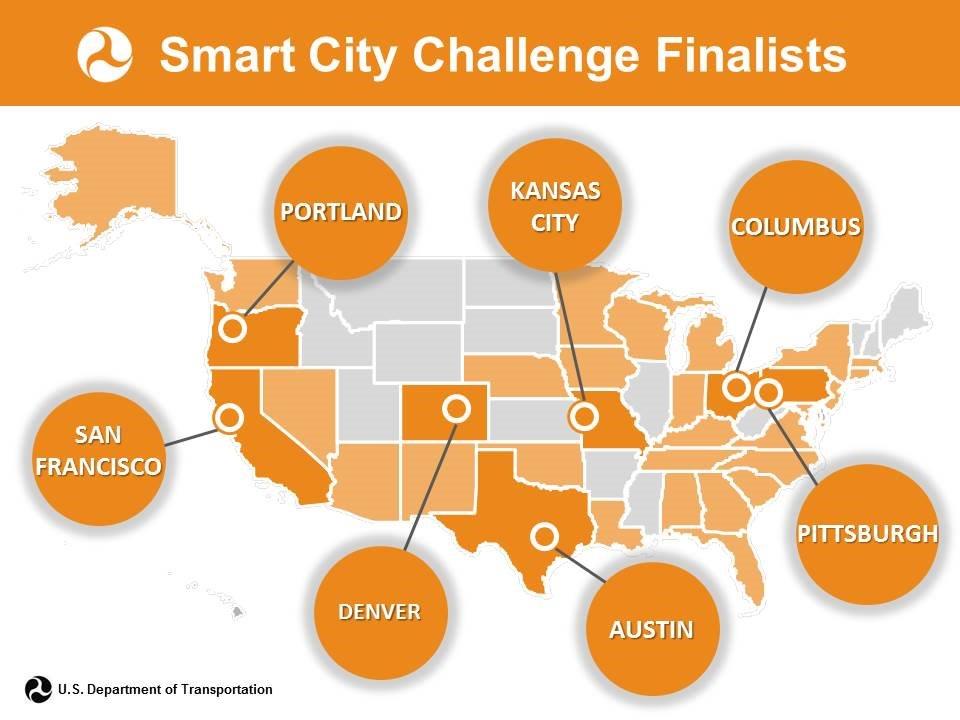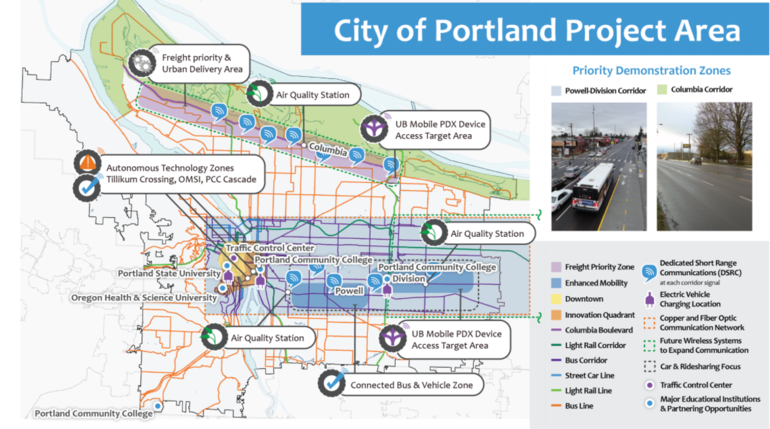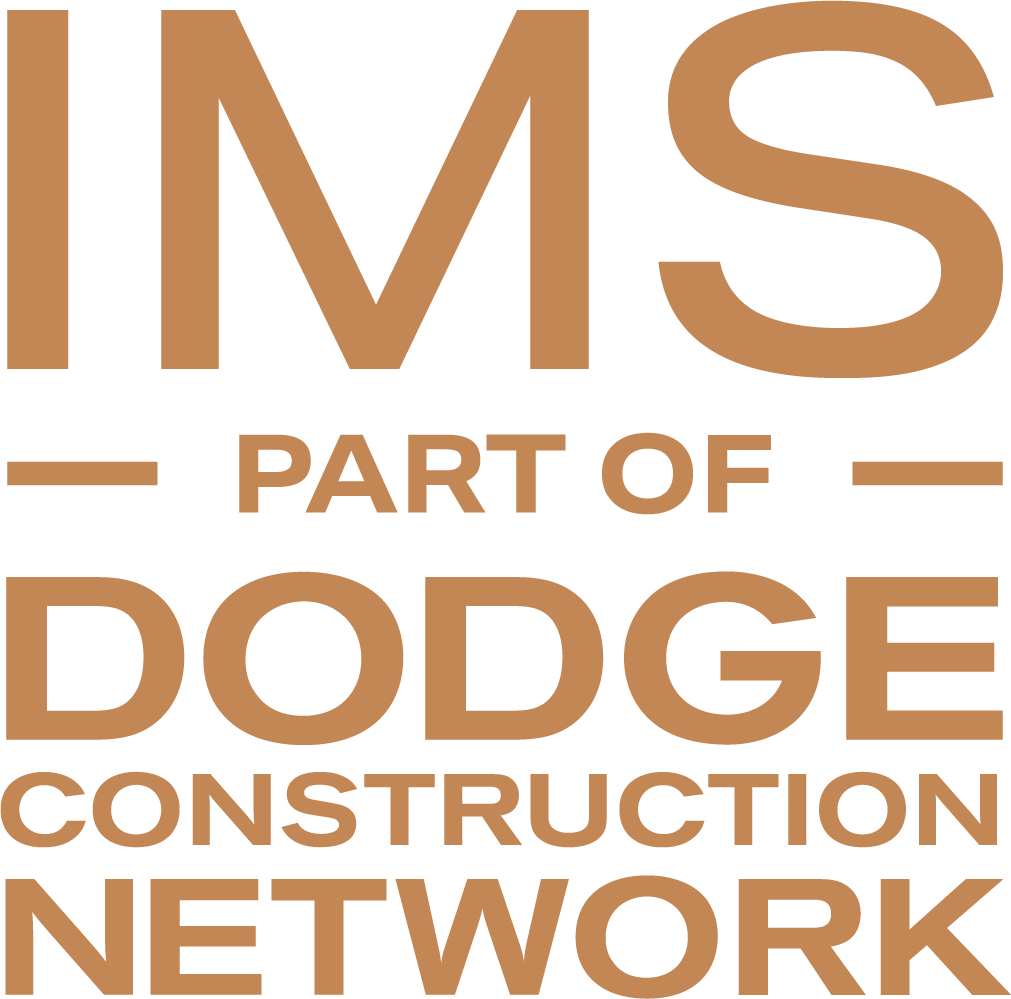
The U.S. Department of Transportation will soon announce the winner of the Smart City Challenge, a $40 million award to implement data-driven ideas to make transportation safer, easier, and more reliable. The winning city will also receive up to $10 million from Paul Allen’s Vulcan Inc. to support electric vehicle deployment and other carbon emission reduction strategies.
With the Smart City Challenge, the DOT “wants to show what is possible when emerging data and intelligent transportation systems technologies and applications are integrated with existing systems in a city to improve safety, enhance mobility, and address climate change.”
In the first round of applications, 78 cities pitched their plans for transforming urban transportation. Seven finalists made the cut, and one of these cities will soon be announced as the winner: Austin, Texas; Columbus, Ohio; Denver, Colo.; Kansas City, Mo.; Pittsburgh, Penn.; Portland, Ore.; and San Francisco, Calif.
The cities’ proposals for the Smart City Challenge included a range of plans to “integrate innovative technologies to prototype the future of transportation.” Now the cities are ready to move forward with intelligent transportation systems, automated vehicles, smart grid technologies, autonomous shuttle networks, electrification of fleet vehicles, and integrated data management systems.
Meanwhile, IMS is tracking published RFPs and upcoming consulting opportunities related to these transportation technologies and planning projects.
Austin
Austin has five elements in its Smart City Initiative, starting with the implementation of automated and connected vehicles and the electrification of high-mileage fleet vehicles.
“In the Austin of tomorrow, our downtown remains vibrant, but people no longer need to assume they’ll drive their own car to get there,” according to the Austin Vision Narrative. “Instead, they think first of on-demand automated electric vehicles, transit, biking, shared and on-demand vehicles, and other options.”
The other aspects in the plan are: sensor systems and collecting data to make operating decisions and traveling decisions in real time; travel access hubs to increase multi-modal options; and packaged mobility service to “make traveling on different services effortless.”
Austin noted in its proposal that consultants would play an early and important role in implementing these initiatives. “As procurement is a critical path item, Austin is already exploring paths to begin procurement processes now so we are ready to go upon receiving the award,” the city said in the Vision Narrative.
IMS has covered several projects in Austin related to parking demand, intelligent transportation systems, and multi-modal development. These include RFPs for a “Parking Analysis and Management Strategy (IMS No. 330154),” “Operations and Engineering Staff Support for Traffic Management Center (IMS No. 323436)” and “Engineering for Downtown Commuter Rail Station (IMS No. 337410)”.
Columbus
Columbus announced that it would establish a new Smart City Program Office to manage the design, development, demonstration, and integration of the project.
The city has five elements to its strategy: 1) developing smart corridors; 2) enhancing the timeliness and quality of traffic condition data, complemented by a routing app; 3) pushing real-time information to users on traffic, parking conditions and transit options; 4) developing communication technology solutions for those who lack smartphone data services; and 5) expanding the usage of electric and smart vehicles.
Columbus recently published an RFP to seek consulting services for implementation of the Smart City Challenge (IMS No. 349262), including public outreach, program management, and intelligent transportation systems design services.
Denver
Denver’s Smart City Program has three components that would all be linked to an Enterprise Data Management Program to connect data sets for safety, mobility, transportation, freight, and weather.
The three components of Denver’s Smart City Program are: 1) a mobility-on-demand enterprise featuring apps and interactive kiosks; 2) transportation electrification; and 3) intelligent vehicles.
“We will unleash the true potential of automated vehicles (AV) by building a connected automation environment that systematically aligns the needs of users and businesses with the transportation network for a safer, smarter, more environmentally friendly Denver,” the city said in its Narrative
IMS recently covered an RFP for a Transit Master Plan for Denver Moves (IMS No. 331220). IMS also has an Advance Notice for a “Fixed Route Scheduling and Runcutting Software System” (IMS No. 344182).
Kansas City
Kansas City’s plan to meet the Smart City Challenge comprises three interconnected efforts, which it refers to as “pillars.”
The three pillars include: 1) deploying transportation and connectivity solutions in the East Side Neighborhood; 2) increasing key corridor safety through connected and autonomous vehicles; and 3) increasing mobility and accessibility through information sharing.
“These pillars will enable us to develop, validate, and deploy elements of a 22nd century transportation system that can evolve as technologies continue to develop,” the city said in its Vision Statement.
Pittsburg
Pittsburgh’s plan – called SmartPGH – is a communication and data platform for modern infrastructure.
“By building on existing technology deployments and increasing fixed and mobile sensors over a number of major ‘Smart Spine’ corridors that connect with primary commercial centers and amenities, Pittsburgh will collect, analyze, visualize, and act on information to improve mobility for residents,” the city said in its Narrative.
Elements under the SmartPGH umbrella include: real-time adaptive signal control with smart transit priority, intelligent freight management, autonomous shuttle networks, clean energy-transportation corridors, a robust multi-modal travel and accident reporting app, and dynamic parking management.
In related news, IMS covered a “Pedestrian Traffic Study” (IMS 336110) for the downtown area earlier this year.

Portland, Ore.
Portland aims to connect communities, increase road safety, and reduce carbon emissions through the deployment of Ubiquitous Mobility for Portland (UB Mobile PDX).
“This data driven ecosystem will not only provide access and information about low-cost transportation choices, but will also support Portland’s equity, economic development, and climate action goals. UB Mobile PDX provides key data points that will be used to make our city smarter for current and future Portlanders,” the city said in its Vision Narrative.
Key components include: 1) implementing a driver-assistance and collision-avoidance bus and train pilot program; 2) deploying two connected vehicle pilots with a TriMet bus fleet and car-share vehicle fleet; and 3) smart grid technologies such as electrification of priority demonstration zone systems and integration of electric vehicle charging stations into street lighting systems.
IMS has published two related Advance Notices in the area: an “Enhanced Transit Corridors Plan” (IMS No. 323444) and an “Internet of Things (IoT) Gateway for Light Rail Vehicles” (IMS No. 339833).
San Francisco
San Francisco’s goal with the Smart City Challenge is to “expand and integrate shared mobility services across the City to incorporate Shared Connected Automated Vehicles (CAVs) using a community-driven approach.”
In its Vision Narrative, San Francisco said, “CAV technology can meet multiple city goals including eliminating traffic fatalities, reducing emissions, congestion, noise and personal, business and city operating costs.”
Elements in the plan include self-driving/automated shuttles, connected vehicle safety zones, a multi-modal intelligent traffic signal system, low-emission eco-zones, and smart delivery systems.
“We are at the dawn of the internet of services for transportation in connecting everything to everything and everyone to everyone,” the city said. “Transportation is just seeing the beginning of massive changes ahead with the recent introduction of on-demand transportation.”
Recently published IMS projects include an RFP from Caltrans for “Freight Forecasting Model and Travel Demand Model Enhancement and Update” (IMS No. 346260), a “Replacement Toll Collection System” for the Golden Gate Bridge (IMS No. 343923), and transportation and multimodal activity-based modeling for the San Francisco County Transportation Authority (IMS No. 348006).
Visionaries
The DOT’s Smart City Challenge laid down a gauntlet of ambitious elements for transforming transportation. These seven cities have responded by crafting innovative plans – with refined details and big-picture outlooks – to improve transportation performance while integrating and supporting community vibrancy, safety, and the environment. Now they wait for the light to turn Green!
Video pitches from the seven finalists are available here.

